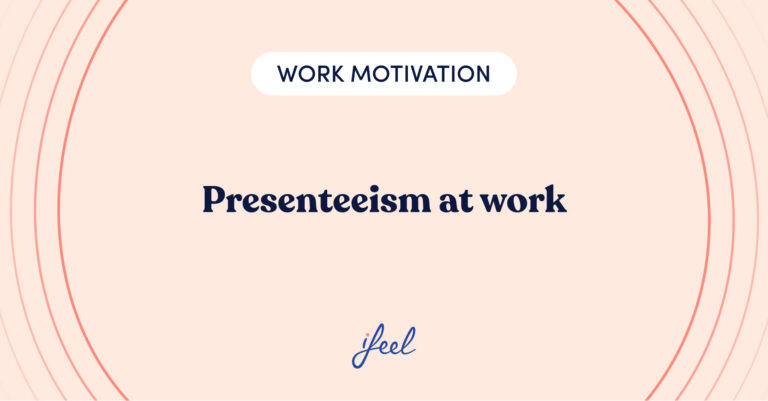Do you know how to practice assertiveness at work? Have you ever been in the middle of an argument at work and hurt the person you are talking to? Or, on the contrary, do you give in to the requests of others, leaving your own needs aside? If this is the case, it is most likely that your communication style is not the most appropriate. In this case, practising assertiveness at work is the key to ensuring our conversations are always balanced.
If you’ve found yourself in the middle of one of these situations, don’t worry – you’re not alone! This is because, as in any interpersonal relationship, communication is the tool that allows us to understand each other, compromise, and express our needs. However, although we all seek to communicate, this does not mean we always do so in the best possible way.
And, of course, the work environment is not exempt from such communication problems. Since, like any other, labour relations are based on using this tool to achieve their objectives; therefore, if assertiveness is not practised at work, these objectives will be further and further away.
What do we mean by assertiveness at work?
An assertive person selects an assertive communication style when relating to others. In other words, they can express their ideas, thoughts, and feelings, and need to be direct, honest and confident, respecting others and always considering their point of view.
Therefore, applying this concept to the workplace will increase trust between teams, facilitate the flow of information, and improve the ability to generate alternative solutions to the same problem. This, in turn, will strengthen relationships and bonds between co-workers, thus fostering corporate well-being in companies.
Assertive communication at work is reflected when we can say what we want, know when it is the right time to say it, and always respect our needs and wishes. We are also assertive when we can respect others’ points of view, their limitations and empathise with their needs.

The aim, then, of practising assertiveness at work is to reach agreements with our colleagues, bosses, or superiors so that a balance is achieved between what both parties need. Being assertive also means knowing how to set limits -without falling into disrespect-, disagreeing without losing control, and demanding that my rights are respected to prevent them from being undervalued or ignored.
How to be more assertive at work?
Now, you might be wondering how to be more assertive at work. Here are a few suggestions that we can implement to start practising assertiveness at work.
- Practice empathy: It will help you understand your colleagues’ needs and concerns. By considering their views, needs, and boundaries, you foster a friendly atmosphere in which it will be easier to reach agreements.
- Be direct and concrete: This is important for time management and being clear and understood.
- Set healthy boundaries: Saying “no” to other people’s requests is sometimes one of the most difficult areas to deal with at work. However, it is one of the most important. The idea is to strike a balance between when we can help and when we should let people take responsibility for what is rightfully theirs. Otherwise, this can lead to an overload of work and increased stress levels. In short, setting boundaries through assertiveness is a form of self-care at work.
- Work on your emotional intelligence: As mentioned above, increasing your emotional intelligence at work will allow you to take perspective in situations where intense emotions prevail so that instead of judging others or blaming them, you will be able to step back and look for alternatives to resolve conflicts constructively.
- Control your body language: Sometimes it’s not what we say, but how we say it. Assertiveness at work includes the correct use of words and the control of body language to achieve coherence between what we want to communicate and how we communicate it. Remember to maintain an open and relaxed posture to demonstrate confidence and willingness to engage in dialogue. Also, always try to make eye contact with the person you are talking to, and use your hands – in moderation – to gesture and emphasise what you want to say.
- Watch your tone and the speed at which you speak: Good modulation reflects calm and confidence. This helps to convince the audience and makes it easier to get them to listen and keep their attention.
- Practising active listening: When we talk about assertiveness at work, it is about knowing how to express ourselves and our ability to listen attentively to colleagues and peers.
This process is called “active listening”, and it is nothing more than the process of involving all our cognitive resources in attending and listening, with the purpose of understanding what the other person wants to communicate. This will increase the possibility of knowing and understanding their ideas and desires, letting them know that we are really listening to them.
However, it is necessary to emphasise that actively listening to your interlocutor does not imply that you agree with their ideas, but it does help to generate an atmosphere of trust. This can be done by asking questions, nodding your head, summarising what has been said to avoid misunderstandings, and showing genuine interest in their ideas.
- Handling constructive criticism: Contrary to what many may think, constructive criticism implies an opportunity to improve. Therefore, part of being assertive at work involves giving and receiving criticism, and knowing how to handle both scenarios is key to creating collaborative and healthy teams. In other words, establishing a positive feedback dynamic paves the way for professional growth.
For this, it is necessary not to take comments personally. Constructive criticism at work is always related to your job or your responsibilities. Keeping this in mind will save you discomfort, as you will realise that often the comments are not as personal as they seem.
On the other hand, in the case of criticism, it is important that assertiveness is our ally. That is to say; we should try to do it in the form of a conversation, taking care of our tone and posture to express kindness and offering comments in the form of suggestions that can be implemented.
- Continuous self-assessment: Constantly reflecting on your interactions is the main step in making changes and improving. Therefore, look for opportunities to improve your communication, and you will progressively increase your assertiveness at work.

Benefits of assertiveness at work
Any interaction between individuals benefits from effective communication. For this reason, work environments are excellent examples of the benefits of practising assertiveness at work. Among these benefits, we can mention:
- Increased innovation: An assertive environment encourages contributing new ideas and creative solutions.
- Stress reduction: Open and honest communication reduces tension and anxiety at work.
- Increased productivity: Effective problem-solving and quick decision-making boost overall productivity.
- Leadership development: Assertiveness is a key quality in leaders, as it inspires confidence and guides teams effectively.
- Professional growth: Employees who master assertiveness are more likely to advance in their careers, as they can positively influence their work environment.
Why is it important to promote assertiveness in HR?
There are multiple reasons for HR departments to promote assertiveness in the workplace. Firstly, we can mention the improvement of employee retention, as cultivating an assertive work environment represents an attractive factor for keeping valuable talent in the organisation in the long term.
Furthermore, fostering diversity and inclusion becomes more feasible thanks to assertiveness, as this skill ensures that all voices are heard.
On a practical level, efficient conflict resolution becomes a reality by equipping employees with assertive skills, significantly reducing the need for HR intervention in workplace disputes.
On the other hand, promoting assertiveness from the HR department reinforces a culture of open and transparent communication throughout the organisation. Additionally, the external perception of the company is also favoured, as organisations that promote assertiveness are seen as positive workplaces, attracting new talent interested in joining the company.

At ifeel, we understand that any skill that improves the employees’ mental health at work represents an opportunity for further growth. For this reason, we have developed a mental well-being solution for companies, designed by our team of psychologists who are experts in workplace well-being with one main objective: to help companies to place employee health at the centre of their work strategy.
Thanks to this partnership, HR managers can receive personalised, data-driven advice on how to get the most out of their teams and take better care of the psychological well-being of the people in them. Try our programme now to see how it could help you.
We hope you found this post about assertiveness at work interesting. If you would like more information about our mental well-being solution for companies, simply request it, and we will get in touch with your team as soon as possible.










